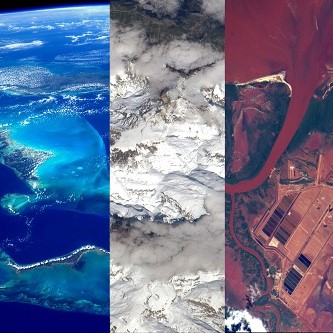Considering that you only need the warhead: absolutely.
deleted by creator
Yup, as a foreign national, I had to jump through a myriad of hoops to get a TWIC which enables me to enter and exit US ports freely without someone escorting me around. Fun fact: A TWIC allows even foreigners to register as a known traveler and TSA pre-screening, allowing me to skip a lot of the hassle when flying in the US.
Hell, getting a TWIC was the only reason why I bothered with getting an actual US work visa. I now hold B1, B2, C1/D, and it was all for the TWIC. If it wasn’t for that, I’d be fine just going on a tourist visa.
I am curious now on how much of it is about being worried about nuclear bomb, and how much is about people either knowingly importing illegally radioactive materials or worker forgetting that the big orange box is actually radioactive materials (believe me, it’s way more common than it seems, especially with low activity parts)
deleted by creator
I’ll add to what other people are saying with a caveat.
Detonating a Nuke at ground level significantly reduces it’s effectiveness and range. It’s still going to be bad, but it won’t be city levelling bad. A couple of miles at best for the worst explosion/fire damage, even if it’s stronger than Fat Man.
There’s a reason why the two bombs dropped on Japan were detonated at 500-600 meters(1600-1900 feet) above the ground.
Doesn’t the ground just absorb about half of the energy? (And become nasty fallout)
Fat Man was tiny by later standards. The B41, which was actually deployed, was three orders of magnitude more powerful. Sizes have come down again since delivery got really accurate, but the workhorse B61 can be dialed to somewhere from 10 to 20 times Fat Man’s yield.
It absorbs a lot, and it channels a lot of the blast up.
Yes, but also its not easy to smuggle a large bomb either.
Yes, they even put nukes in backpacks
Yes. Why not? They’re small enough.
Ports and the like do have radiation sensors to try and combat any such thing. I don’t know how effective or widespread they are exactly, though, and you’d think if you have the resources to get a nuke just crossing in somewhere else wouldn’t be hard.
That was Einstein’s probosal to fdr in 1938. nobody was interested. When the English checked the numbers they realized it was airplane size and encouraged the us to build on. Airplane bomb bays are small, a row boat could haul little boy around ( though it is likely to capsize if the seas are not perfect calm)
Given that they got it down to a bazooka, yeah.
This is something that USA has discussed and there may be radiation sensors installed in and around major cities to prevent this.
i assume for a truck you can shield the radiation with lead walls, or insulating materials.
I figure it is possible. I don’t know how much lead shielding is required, and a semi could probably haul it just fine.
That being said, one will most likely still give themselves away. Contamination is a thing, and I don’t know how one would build and load that massive weight in secret.

Fat Man and Little Boy would fit in a small Uhaul… but both could fit in a big one together.
The test nukes were the size of one of those county fair huge pumpkins
On May 25, 1953 the Grable test under Operation Upshot Knothole fired the W9 nuclear artillery shell over 6 miles downrange at Frenchman’s Flat detonating at 15 kilotons. The artillery shell weighed roughly 803 lbs. This was 1950’s technology that could still fit in the back of a pickup truck and level a city. I’m sure they’re a lot lighter and a lot more powerful today. So, yes. If we could do it in '53 we could definitely do it today, but with orders of magnitude more destructive force and likely lighter weight.
Edit: I did some more digging. For instance, the W88 warhead aboard MIRV’s on nuclear subs today have an explosive force of 475 kilotons with a mean average weight of 400 lbs for comparison. Though, most of that weight is probably shielding for reentry, so you could probably cut it back significantly if you’re just putting it in a car trunk.
deleted by creator
Delivered? Unlikely.
Detonated? Absolutely.
No. If it was that easy, a significant City would’ve been nuked by terrorists by then.
I mean, getting a bomb in the first place is hard as hell. Al Qaeda literally just got scammed until they gave up. It’s a major project for largish states, even.
Yes, but at this point it would be cheaper and quicker to have spacex fly to orbit, capture a 5 ton rock and drop it on a city.
There’s a reason Iran has been ‘weeks’ from making a bomb for decades now.
That would be a really shitty nuke. Like around 10% of a Davy Crockett.
Use a bigger rock. I might change the cost by hundreds of millions, and still be less than the billions in development and production for a nuke.
Where do you get these rocks though? There is actually a similar concept that uses tungsten rods instead of rocks.
But the entire thing isn’t really practical. If you want the ability to strike any place on earth in a reasonable time, you’d to have hundreds of tungsten rod equipped satellites (or rocks with rocket engines attached to them) in orbit at the same time.
I’m not sure it would actually be cheaper than just using nukes on ballistic missiles.
The expense of a delivering the nuke is negligible in comparison to the cost and effort of building a nuke. So much so, that large rocks are more economical than building a nuke at this point.
Building nukes isn’t that expensive. The most expensive part is probably building the enrichment facilities, but that’s a one-time investment. Once you have all the material, a nuke isn’t that complicated to build. A bunch of students basically designed one that was deemed to be functional.
On the other hand, launching hundreds, possibly thousands of multi-ton projectiles into orbit is extremely expensive. And of course you have to maintain them in space somehow, possibly for decades. Either that or you have to de-orbit and replace them, which would mean regularly bombarding the ocean or some desert …
It’s just not practical. Even if it was I highly doubt it would be cheaper.





